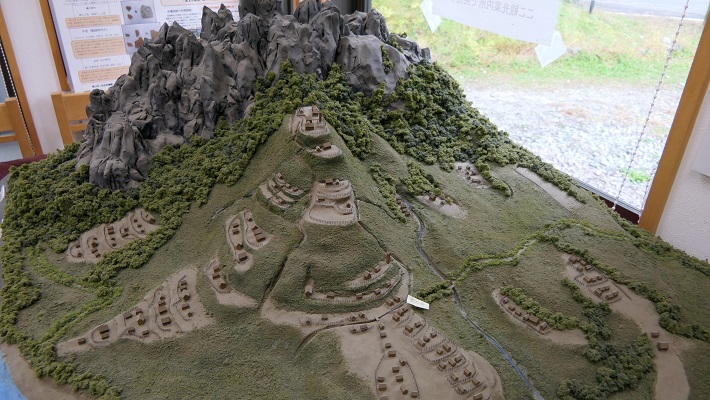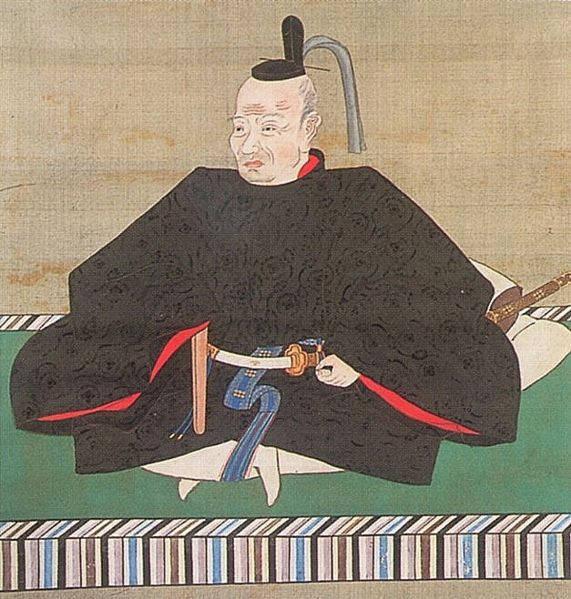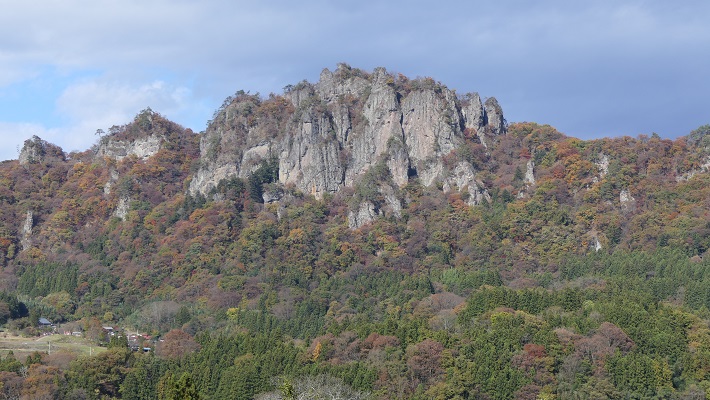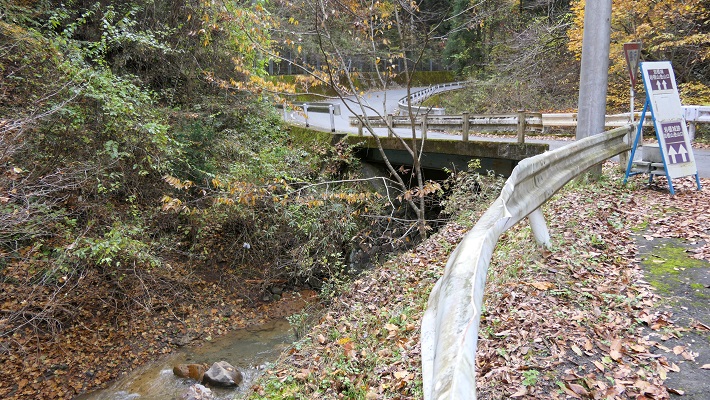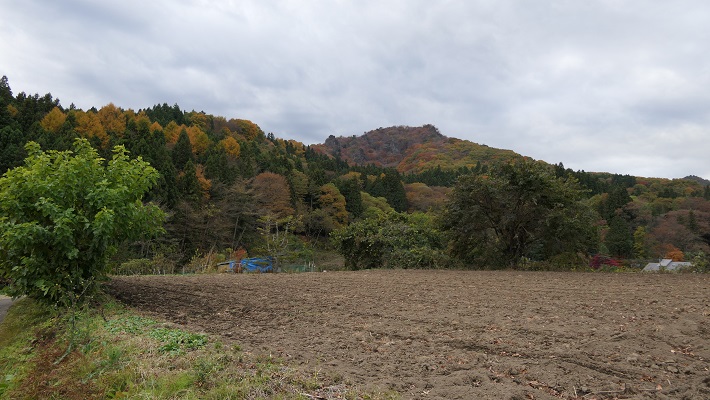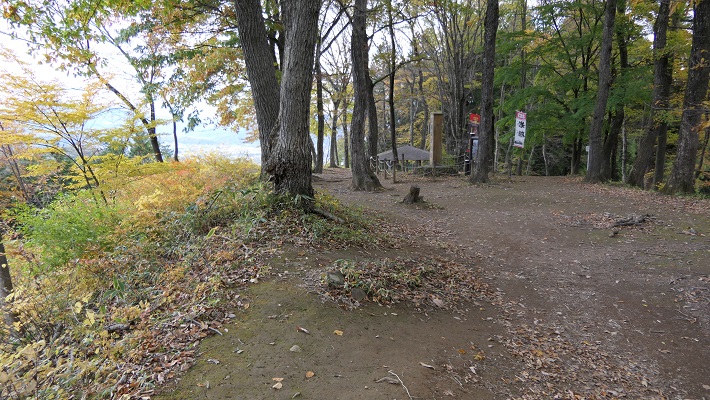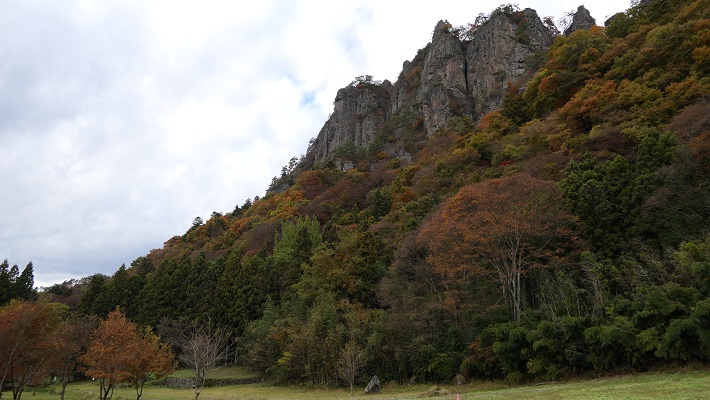立地と歴史~Location and History
沼田城への橋頭保~Foothold for Numata Castle
名胡桃城は上野国(現在の群馬県)北部にありました。この城は戦国時代の16世紀後半に大河である利根川西岸の崖の上に築かれました。川を渡った反対側には沼田城があり、そこは関東地方の戦国大名にとっては非常に戦略的な拠点でした。武田氏の配下であった真田氏が沼田城を確保するための橋頭保として1579年に名胡桃城を築き、1580年には実際に沼田城を手に入れました。
Nagurumi Castle was located in the north part of Kozuke Province (what is now Gunma Prefecture). It was built in the late 16th Century during the Sengoku Period, on a cliff near the west bank of a large river called Tone-gawa. At the opposite side across the river, there was Numata Castle which was a very strategic spot for warlords in Kanto Region. The Sanada Clan under the Takeda Clan built Nagurumi Castle in 1579 as a foothold for capturing Numata Castle which actually belonged to Sanada in 1580.
名胡桃事件の発生~Nagurumi Incident happens
真田氏はしばらく沼田城を維持していましたが、1589年7月の天下人豊臣秀吉の裁定により、北条氏に引き渡されてしまいます。一方真田氏は、名胡桃城はまだ領土の一部としていました。この裁定は北条が秀吉の臣下になるという条件の下に行われました。1589年11月、豊臣秀吉の命令に逆らい、北条は名胡桃城を占領しました。この事件は名胡桃事件と呼ばれています。真田氏は秀吉に事件のことを訴え、秀吉は激怒し北条を成敗することを決定しました。北条氏は当時最も有力な戦国大名の一つでしたが、この事件は1590年の小田原征伐での滅亡につながります。定説によれば、北条は世の中の流れを見誤ったとされています。
The Sanada Clan held Numata Castle for a while, but the castle was handed over to the Hojo Clan under the decision by the ruler Hideyoshi Toyotomi in July 1589, while Sanada still kept Nagurumi Castle in their territory. The decision was made on condition that Hojo would become a vassal of Hideyoshi. In November 1589, against the instructions of Hideyoshi Toyotomi, the Hojo Clan seized Nagurumi Castle. The incident at the castle is called the Nagurumi Incident. The Sanada Clan appealed it to Hideyoshi who was very angry about it and decided to defeat Hojo instead. The Hojo Clan was one of the greatest warlords at that time, but this incident led to their fall in the Siege of Odawara Castle in 1590. The established theory says Hojo misjudged the current tide.

秀吉と真田の陰謀か~Trick by Hideyoshi and Sanada?
しなしながら、歴史家の森田喜明は、この事件は秀吉と真田による謀略であったと反論しています。秀吉が残した手紙によると、彼は既に遅くとも1589年の10月には北条を成敗することを決めていたと言います。秀吉が1589年12月にこの事件のことを北条に問いただした時、北条は平然と、名胡桃城もまた真田から北条に引き渡されたものであり、秀吉に会うための準備を引き続き進めていると答えています。実は、秀吉が名胡桃城を真田側に留めるという裁定内容は、彼から北条への手紙に初めて出てくるのです。更には、発掘調査によれば、名胡桃城跡では戦いや火災があった跡は発見されていません。この新説は実に興味深いものです。
However, a historian Yoshiaki Morita argues that this incident was a trick made by Hideyoshi and Sanada. He says that Hideyoshi had already decided to defeat Hojo at latest in October 1589 according to Hideyoshi’s letters. When Hideyoshi asked Hojo about the incident in December 1589, Hojo answered Hideyoshi calmly that Nagurumi Castle had also been handed over to Hojo by Sanada and they still continued to prepare the meeting with Hideyoshi. In fact, the decision by Hideyoshi to keep Nagurumi Castle on Sanada’s side was shown in his letter to Hojo for the first time. In addition, there is no evidence of a battle or fire in the ruin of Nagurumi Castle according to the excavation team. This new theory is very intriguing.
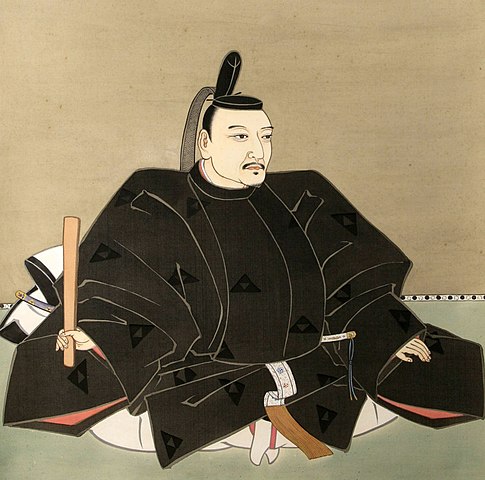
いずれにしろ、北条氏が滅んだ後、沼田・名胡桃両城は真田氏のものとなりました。名胡桃城はその後すぐに廃城となります。真田による沼田城の支配が安定し、その役割が既に終わったからです。城の生涯は10年あまりでした。
Anyway, the fact is that the Sanada Clan owned both Numata and Nagurumi Castles again after the Hojo Clan was defeated. Nagurumi Castle was abandoned soon after that because its role had already ended when Sanada’s governance of Numata Castle became stable. The castle survived for more than ten years.

特徴~Features
自然の地形を生かして築城~Built using Natural terrain
現在、名胡桃城跡は行政によりよく整備されていますが、規模は大きくありません。それは、沼田城を手に入れるための橋頭保という、この城の目的が特定且つ一時的なものだからです。しかしながら、この城が崖から突き出た岬のような自然の地形を生かして作られているのが今でもよくわかります。この地形は、空堀によって三つの主要な郭~主郭、二郭、三郭、に先から元に向かって分かれています。その先には更に2つの郭~ささ郭と物見郭が見張りのために加えられていました。
Now, the ruins of Nagurumi Castle are well developed by officials, but their scale is small. This is because the purpose of the castle, the foothold for capturing Numata Castle, was specific and temporally. However, you can even now see the castle is built using the natural terrain of a shape like a cape sticking out of the cliff. The terrain is divided by dry moats into the three major enclosures – the Main Enclosure, the Second Enclosure, and the Third Enclosure from the top to the bottom. Over the top, two more small enclosures – Sasa-Kuruwa and Monomi-Kuruwa were added to look out.
根元の方には「馬出し」と呼ばれる丸い形で突き出ている防御システムが加えられ、現在でもその形をなぞった線によりわかるようになっています。
At the bottom, a sticking out round shaped defensive position called “Umadashi” was added, the tracing line for the Umadashi shows it now.
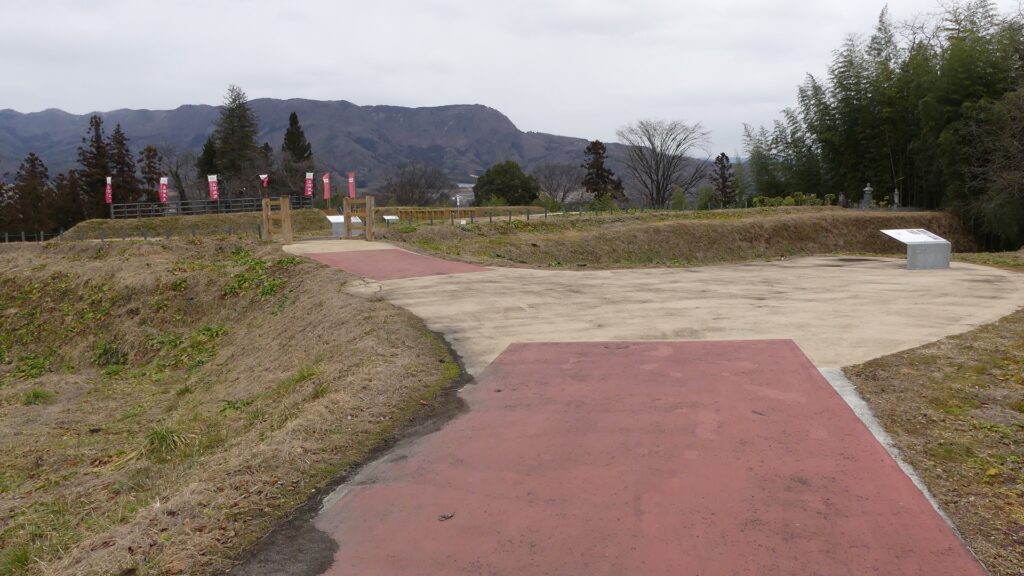
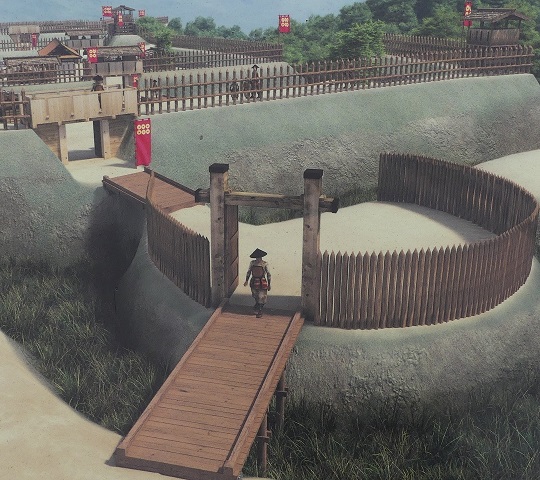
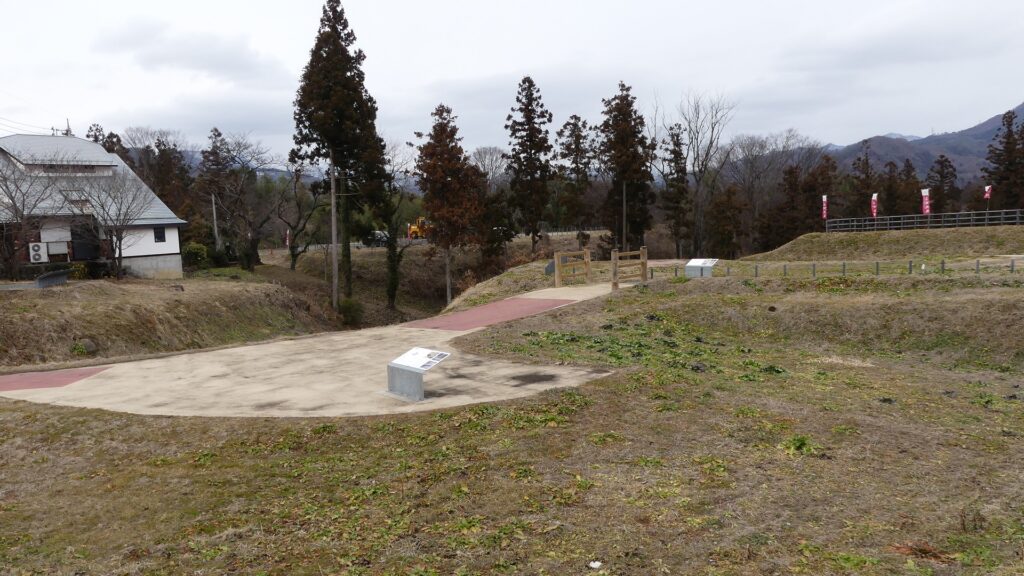
主要部分の構造~Structures of Main Portion
これらの郭の間をつなぐ木橋と接続部分が復元されています。それぞれの郭は簡単な櫓とともに高い土塁と今よりずっと深い空堀によって囲まれていました。二郭は大きな郭でいくつかの建物がありました。主郭には城の記念碑が設置されています。ささ郭まで行くことができ、利根川と沼田市域の景色を眺めることができます。
Wooden bridges and zigzagged connecting points have been restored between these enclosures. Each enclosure was surrounded by high earthen walls with simple turrets and much deeper dry moats in the past. The Second Enclosure is the large one where several buildings stood. The monument of the castle is placed on the First Enclosure. You can go as far as the Sasa-Kuruwa Enclosure to have a view of Tone-gawa River and Numata City area.


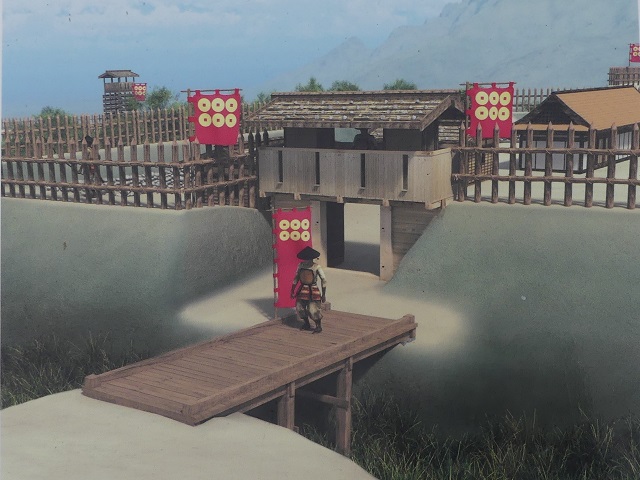

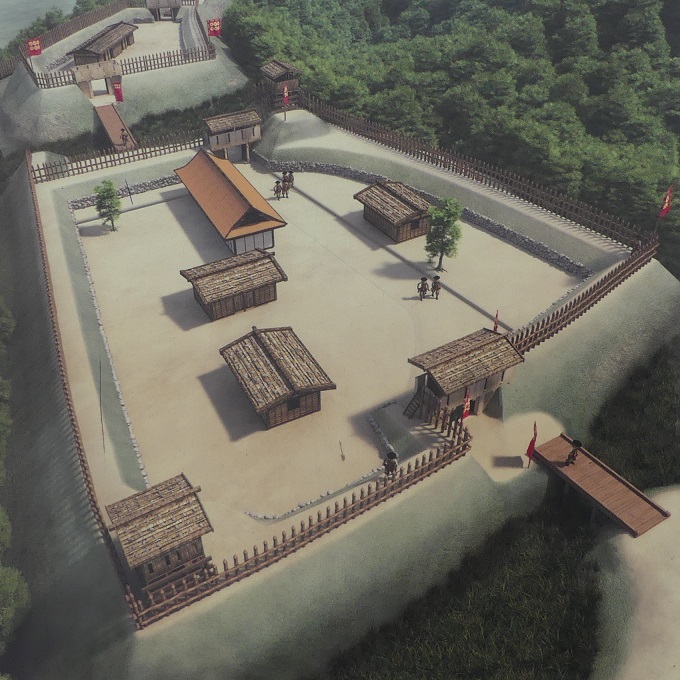
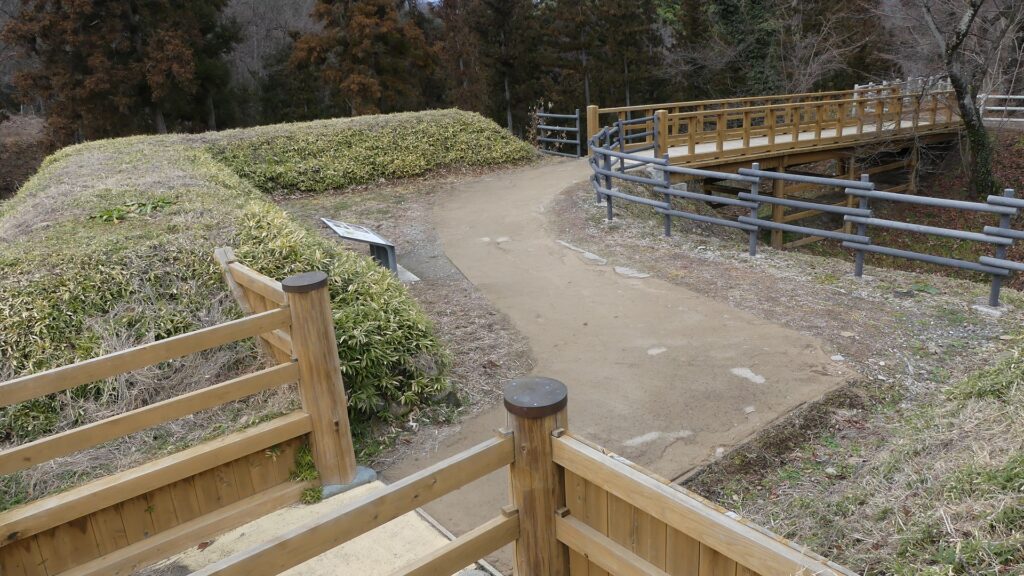

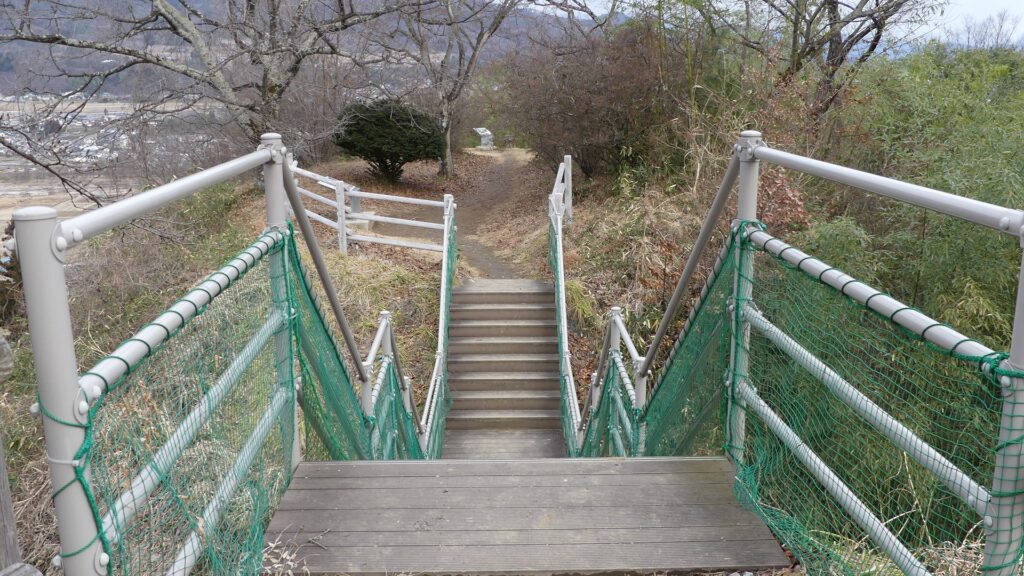
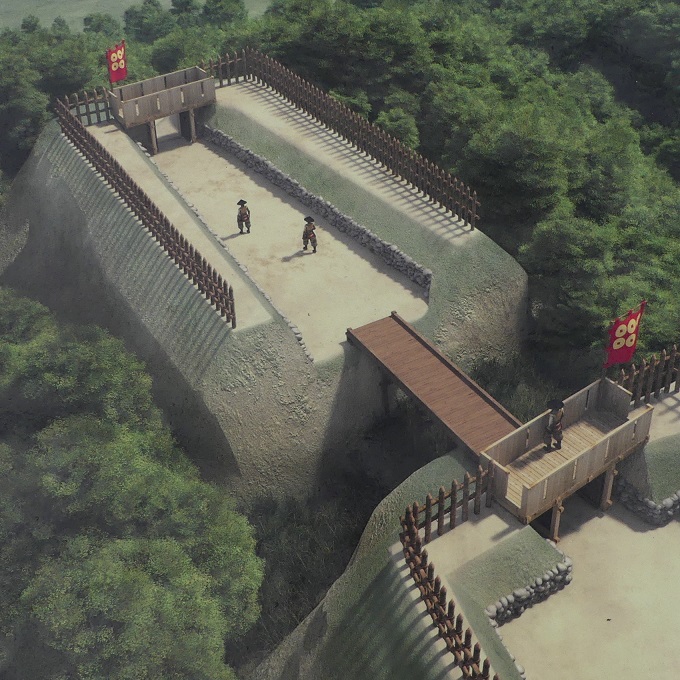
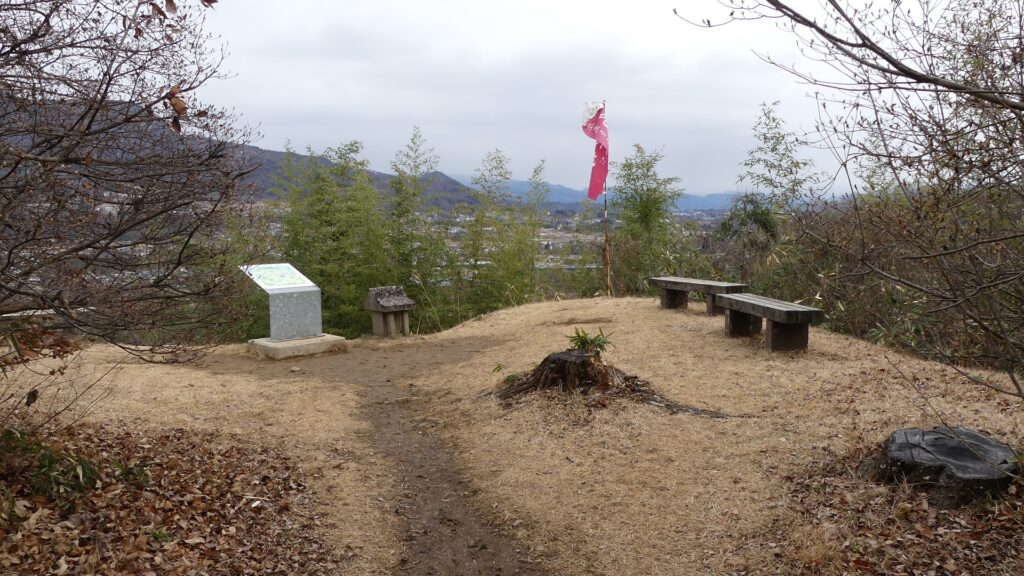
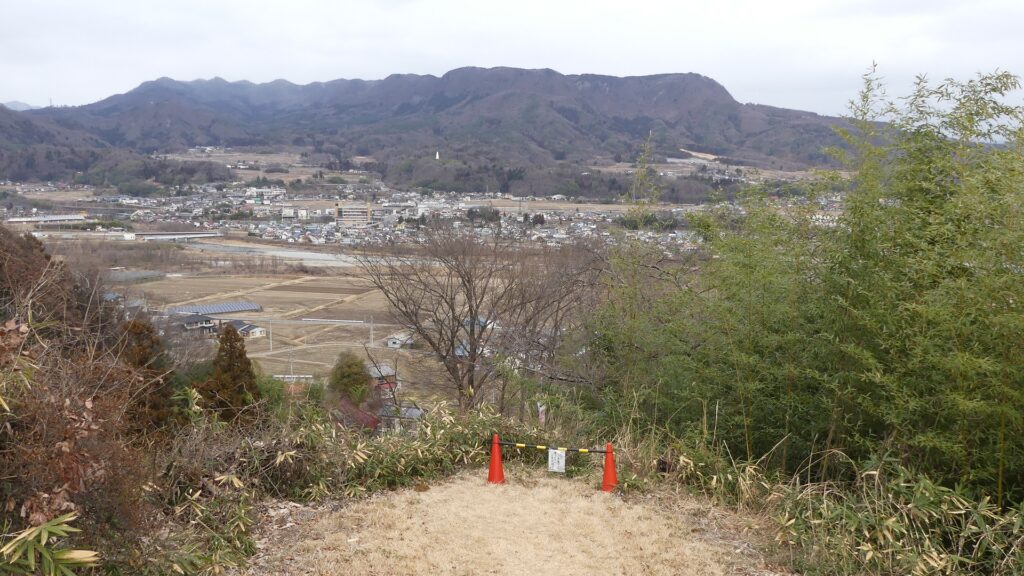
その他の見所~Other Attractions
城で最も大きな郭は般若郭で、他の郭とは別の並びの所にあります。この郭は、多くの兵士を駐屯されるために使われたと考えられています。現在は、ここに車を駐車できます。
The largest enclosure in the castle called Hannya-Kuruwa is in a different line from the other enclosures. It is thought that this enclosure was used to station a lot of soldiers. You can now park your car at this enclosure.
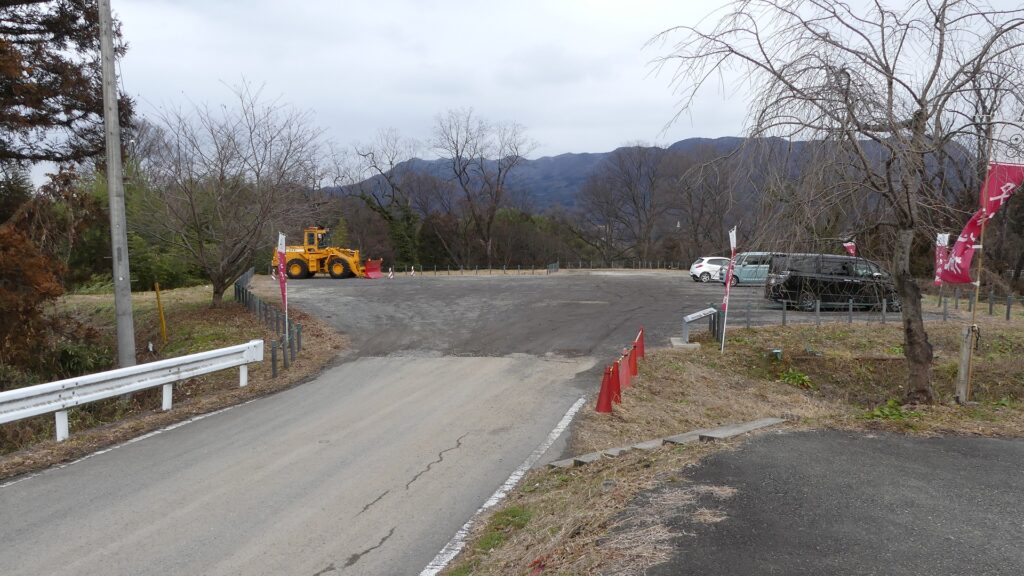
城址案内所では城とその歴史のついてより学ぶことができます。もちろん、そこで説明されているのは、この城は決して北条に引き渡されていなかったという定説の方です。
You can learn more about the castle and its history at the information office. Of course, the explanation of the office is based on the established theory that the castle of never handed over to Hojo.
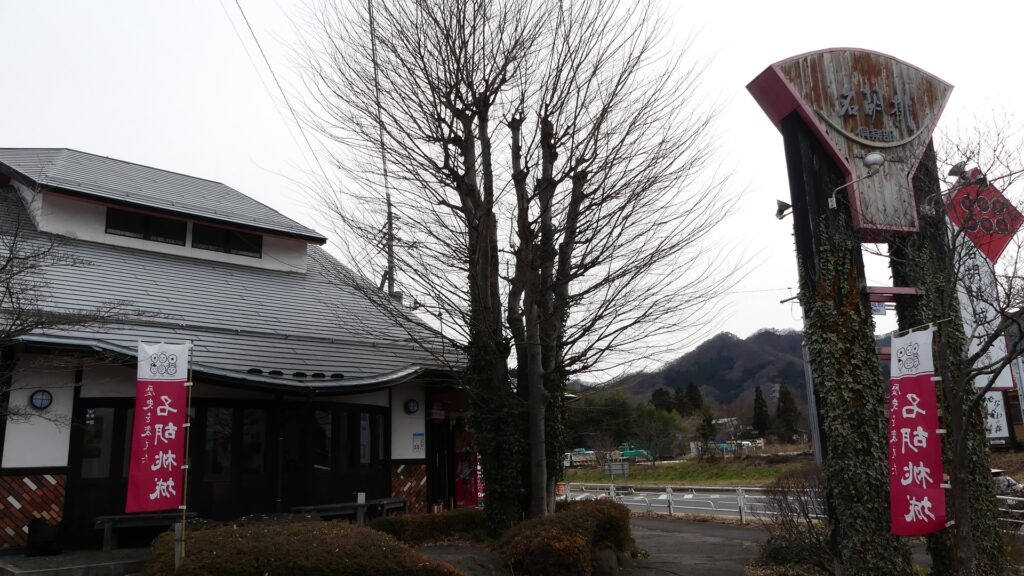
その後~Later History
名胡桃城は早くに廃城となりましたが、その名はとてもよく知られています。例えば、江戸時代後期の有名な日本の歴史書である「日本外史」には名胡桃事件のことが書かれています。1923年、地元の人々が城の保存会を立ち上げ、1927年には本郭に記念碑を建て、歴史公園として城跡を整備しました。更に最近では、みなかみ町が1992年から2006年までの間、城の発掘を行いました。2015年までに町は、詳細な発掘の成果に基づき土塁や木橋の一部の復元を行い、公園の整備を進めました。城跡は現在、群馬県の史跡に指定されています。
Nagurumi Castle was abandoned earlier, but its name is very well known. For example, a famous textbook for Japanese history in the late Edo Period, called “Nihon-Gaishi”, described the Nagurumi Incident. In 1923, the local people launched the preservation society for the castle and developed the ruins as a historical park building the monument at the Main Enclosure in 1927. In more recent years, Minakami Town excavated the castle between 1992 and 2006. By 2015, the town had developed the park more by restoring part of the earthen walls and wooden bridges according to the details of the achievements of the excavation. The ruins is now designated as a Prefectural Historic Site of Gunma.
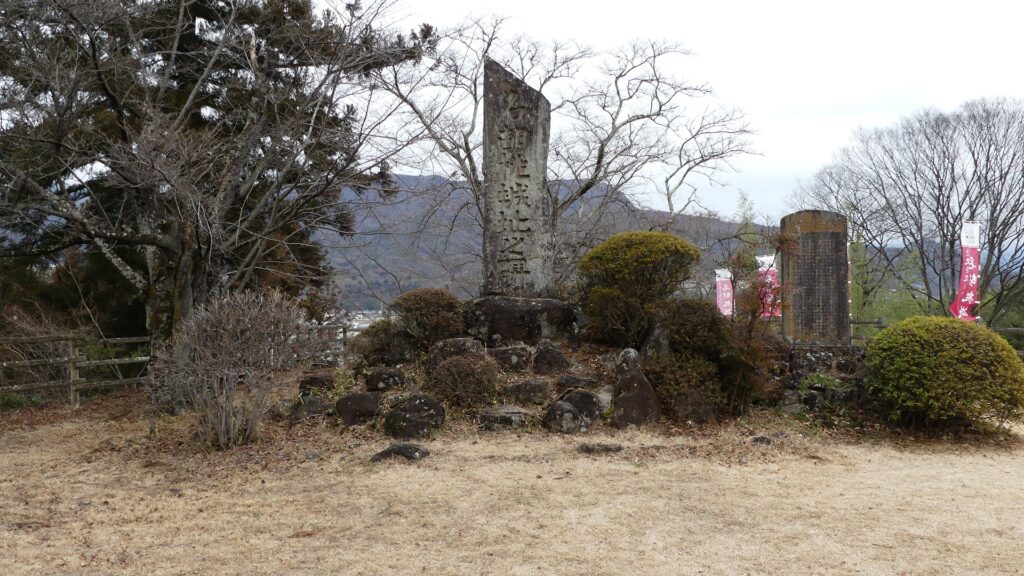
私の感想~My Impression
名胡桃城は広くもなく、石垣の上の天守のような大きな建物もありませんでした。しかし、戦国大名が築いた無数の城の一例なのです。ほとんどの城は特定の目的のみに作られ、その役目を終えれば廃城となりました。名胡桃城はそのような城だったのですが、有名になったがゆえによく整備された城跡として見ることができるのです。この城は地味ですが有益だと思います。そして実際の歴史を学ぶためによい教材だと思うのです。
Nagurumi Castle was not large and didn’t have large buildings like a Main Tower on stone walls. However, it was an example of an uncountable number of castles warlord built. Most of these castles were built just for their specific roles and abandoned after their roles ended. Nagurumi Castle was one such castle, but we can enjoy seeing its well-developed ruins because the castle has become famous. I think the castle is simple, but useful. It is a good teaching resource for people to learn real history.
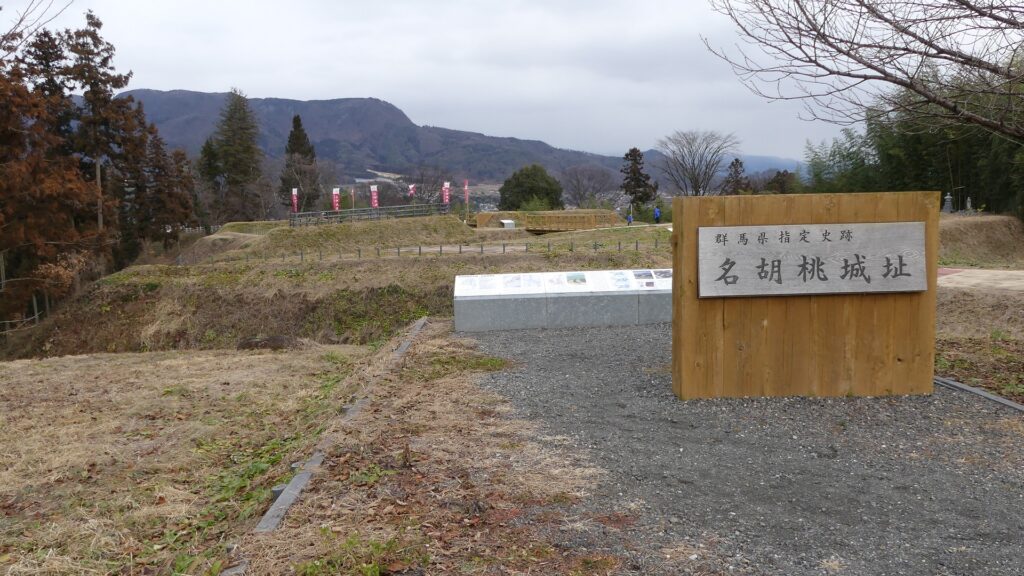
ここに行くには~How to get There
関越自動車道の月夜野ICから約10分のところにあります。般若郭に駐車場があります。
公共交通機関を使う場合には、上越新幹線の上毛高原駅か、JR上越線の後閑駅からタクシーに乗ってください。
It takes about 10 minutes driving from Tsukiyouno IC on Kanetsu Expressway. The ruins offer a parking lot in Hannya-Kuruwa enclosure.
If you want to go there by public transportation, take a taxi from Jomo-Kogen Station on Joetsu-Shinkansen Super express or from Gokan Station on JR Joetsu Line.
リンク、参考情報~Links and References
・名胡桃城址(県指定史跡)、みなかみ観光協会(Minakami Tourism Association)
・「歴史群像67号、戦国の城/上野名胡桃城」学研(Japanese Magazine)
・「北条氏滅亡と秀吉の策謀、森田善明著」洋泉社(Japanese Book)



